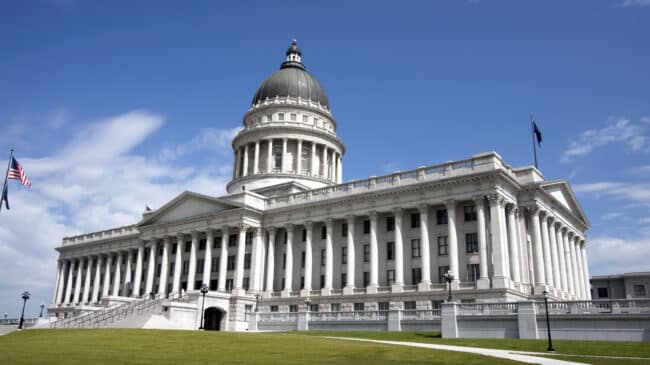The nature of the workforce is rapidly changing and the average American worker now changes jobs 12 times throughout their career, according to the Bureau of Labor Statistics. This is a stark contrast to the days when it was more common for someone to stay in one job for their career.
This fluidity means retirement plans that were once advantageous to these lifetime workers are now less attractive to a growing number of more mobile workers. To address this trend, many public employers have introduced defined contribution retirement plans to provide a more portable and optimal retirement benefit to workers who aren’t planning on sticking around at that job for multiple decades.
A defined contribution plan uses an individual retirement account, like private sector 401(k) accounts, to which regular contributions are made, eventually resulting in a lump sum that is accessible at the worker’s retirement. This type of retirement plan does not place retirement saving risk on the public employer and taxpayers. And it provides the employee with a chunk of money that can move with them from one employer to the next if they change jobs. It also affords the worker more personal control over investments and other disbursement options in retirement, like annuities.
Unlike defined benefit pension plans, defined contribution plans do not depend on actuarial predictions on the market or other demographic assumptions. The feature that most impacts a defined contribution plan is the total contributions flowing into the member’s account. For a defined contribution plan to provide an adequate retirement, the contributions that are paid into that personal account must be sufficient.
What is ‘sufficient’ depends on various factors, including the type of job being performed and the existence of other supplementary benefits like personal savings and social security. Figure 1 shows the various contribution rates that are used for the primary defined contribution plans run by state governments.
Figure 1: Contribution Rates for State-Run Primary Defined Contribution Retirement Plans
| State | Plan | Employee Type | No Social Security | Employee Contribution | Employer Contribution | Total Contribution |
| OH | STRS | Teacher | X | 14.00% | 9.53% | 23.53% |
| CO | PERA | General | X | 10.50% | 10.50% | 21.00% |
| AZ | PSPRS | Safety | 9.00% | 9.00% | 18.00% | |
| OH | PERS | General | X | 10.00% | 7.50% | 17.50% |
| MT | PERA | General | 7.90% | 8.63% | 16.53% | |
| AK | TRS | Teacher | X | 8.00% | 7.00% | 15.00% |
| ND | PERS | General | 7.00% | 7.12% | 14.12% | |
| SC | SCRS | General | 9.00% | 5.00% | 14.00% | |
| AK | PERS | General | X | 8.00% | 5.00% | 13.00% |
| PA | PSERS | Teacher | 7.50% | 3.50% | 11.00% | |
| PA | SERS | General | 7.50% | 3.50% | 11.00% | |
| OK | PERS | General | 4.50% | 6.00% | 10.50% | |
| MI | PSERS | Teacher | 3.00% | 7.00% | 10.00% | |
| MI | SERS | General | 3.00% | 7.00% | 10.00% | |
| UT | URS | General | 0.00% | 10.00% | 10.00% | |
| FL | FRS | General | 3.00% | 3.30% | 6.30% |
As the table above demonstrates, there is quite a bit of variance in contribution levels among state-run defined contribution plans. For example, public safety workers tend to have earlier retirement ages, so they need higher contributions to achieve a sufficient sum by the time they exit the workforce. Some government employers also decline participation in Social Security, which should be counteracted with higher defined contributions to make up for the loss of that income stream. This is visible in the above chart, with most of the top total contributions coming from either public safety plans or non-Social Security plans.
In general, most financial experts recommend that total contributions for a member participating in Social Security need to be 10% to 15% of their pretax earnings to ensure they have enough money for a secure retirement. For public workers not participating in Social Security or any other supplementary benefit, a higher 18% to 25% contribution rate is advised.
Judging by the advice of experts, Florida—which is positioned dead last in the ranking of total contributions—needs to increase its contributions to ensure that its public workers will be retiring with enough in their defined-contribution accounts. In fact, policymakers in Florida are proposing just this, with Gov. Ron DeSantis including a 3% increase on state contributions in his proposed budget. More recently, the Florida state legislature introduced House Bill 5007, which would implement that increase.
As more government employers turn to defined contribution plans to better serve their evolving workforces, they must consider the various plan features needed to provide employees a secure retirement. The most important consideration is the level of contributions that go to the plan. It is useful to see how other states are handling this crucial aspect of retirement policy and useful for state employers to closely monitor where their contribution rates stand in this aspect.
Government employers that fall close to or below recommended contribution rates should revisit their retirement contribution policies to ensure that they are providing a benefit that can be a valuable primary retirement vehicle capable of providing the type of income that workers need in retirement.
Stay in Touch with Our Pension Experts
Reason Foundation’s Pension Integrity Project has helped policymakers in states like Arizona, Colorado, Michigan, and Montana implement substantive pension reforms. Our monthly newsletter highlights the latest actuarial analysis and policy insights from our team.


